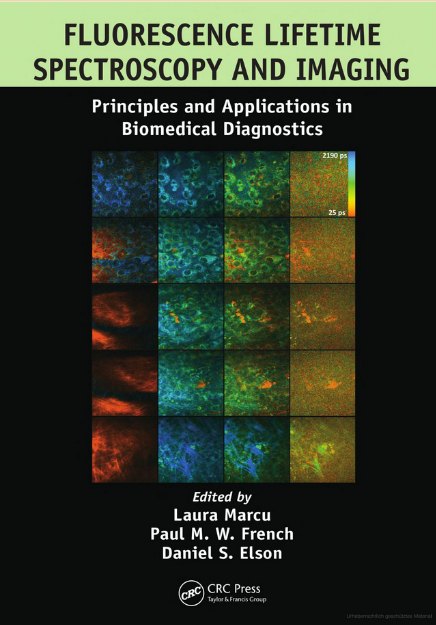
Book Chapter, in L. Marcu, P.W.M. French, D.S. Elson, Fluorescence lifetime spectroscopy and imaging, CRC Press 2015
FLIM techniques can be classified into time-domain and frequency-domain techniques, photon counting and analog techniques, and point-scanning and wide-field imaging techniques. Virtually all combinations are in use. This leads to a wide variety of instrumental principles, a number of which are described in other chapters of this book. Different principles differ in their photon efficiency, i.e. in the number of photons required for a given lifetime accuracy, the acquisition time required to record these photons, the photon flux they can be used at, their time resolution, their ability to resolve the parameters of multi-exponential decay functions, multi-wavelength capability, optical sectioning capability, and compatibility with different imaging techniques. This chapter focuses on time-domain FLIM by time-correlated single photon counting, or TCSPC.
TCSPC FLIM is based on scanning a sample with a focused laser beam, detecting single photons of the fluorescence signal, and determining parameters for the individual photons. These parameters are used to build up photon distributions. Depending on which parameters are used, fluorescence lifetime images at a single wavelength, at multiple excitation or emission wavelengths, and phosphorescence lifetime images can be built up. TCSPC FLIM reaches an almost ideal efficiency of photon recording. Another advantage of TCSPC FLIM is that the data contain clearly resolved decay curves in the individual pixels. Biological information hidden in the composition of multi-exponential decay profiles can therefore be extracted. Moreover, data in different wavelength channels, and fluorescence and phosphorescence data are obtained simultaneously. The data therefore remain comparable, independently of possible dynamic effects in the sample during the acquisition time. TCSPC can even be used to record dynamic changes in the fluorescence decay functions within a sample. By building up a data array of decay functions over the distance in a line scan and the time after stimulation of a sample dynamic changes can be resolved at a resolution down to milliseconds.
